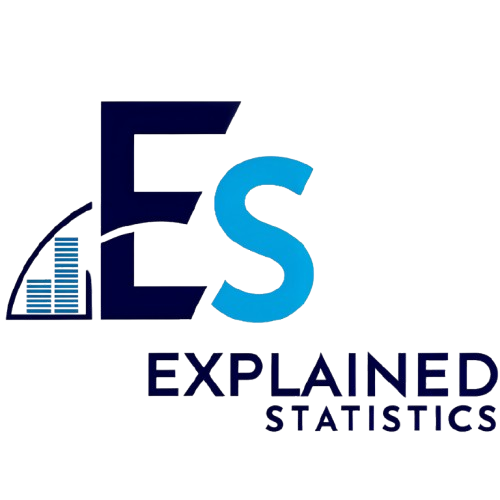Introduction
In the vast universe of data analysis, two terms reign supreme: “parameter” and “statistic.” But what do they really mean? Think of parameters as the VIPs of the data world—exclusive to entire populations and often cloaked in mystery. On the other hand, statistics are the charming party crashers, representative of samples, and always ready to provide a glimpse into the bigger picture.
Why should we care about these terms? Well, understanding the difference between parameters and statistics is crucial for researchers, analysts, and anyone who loves data. It’s the foundation of accurate research, reliable conclusions, and effective decision-making. When researchers talk about parameters, they refer to fixed values that describe entire populations—like the average height of all adult males in a country. Statistics, however, are derived from samples and can vary, making them a bit more unpredictable.
What’s in store for you in this blog post? We will unfold the definitions of parameters and statistics, highlight the key differences, and provide real-world examples. By the end, you’ll be a whiz at distinguishing between these two essential concepts. So, grab your favorite snack and get comfy—let’s dive into the fascinating world of parameters and statistics!
For those who want to delve deeper into understanding statistics, check out “Naked Statistics: Stripping the Dread from the Data” by Charles Wheelan. This book is perfect for anyone who finds statistics intimidating—it’s time to strip away the dread and embrace the data!
Understanding Parameters and Statistics
Definition of a Parameter
A parameter is a numerical characteristic that describes an entire population. Imagine you want to know the average height of all adult males in a country—this average is a parameter, often denoted by the Greek letter μ (mu). Parameters provide a snapshot of the entire group, capturing essential traits without needing to survey every single individual.
For example, let’s say the average income of all households in the United States is a parameter. This figure is fixed and represents the true income level across the entire population of households. Parameters are crucial in statistics because they serve as benchmarks for comparison and analysis.
To further illustrate, think of the total number of students enrolled in a university as a parameter. If the university has 20,000 students, that number is a characteristic of the entire population of students at that institution. Parameters help researchers understand the whole picture, even if they can’t measure every individual.
In summary, parameters are the definitive characteristics of populations, providing valuable insights that guide research and analysis. They’re like the gold standard in data—important, fixed, and often elusive. Now that we’ve covered parameters, let’s shift gears and talk about statistics!
Definition of a Statistic
A statistic is a numerical characteristic derived from a sample drawn from a larger population. Think of it as a tasty bite-sized piece of data, offering insights into the whole pie. For example, if you want to know the average height of adult males in a specific city, you might measure a sample of 100 men. The average height calculated from that sample is your statistic, often denoted as x̄ (x-bar). Imagine having a gathering of 100 friends and measuring their heights to estimate how tall the average guy in town is. That’s statistics in action!
Statistics play a critical role in research and data analysis. They help researchers make inferences about the broader population without needing to survey every single individual. This is particularly useful when dealing with large populations where gathering data from everyone is impractical, not to mention time-consuming.
For those eager to explore the intersection of statistics and data science, consider picking up “Statistics for Data Science” by James D. Miller. This book is a must-read for anyone wanting to harness the power of data in their decision-making processes!
Key Differences Between Parameters and Statistics
Fundamental Distinctions
Understanding the fundamental differences between parameters and statistics is essential. First, let’s define our terms:
- Population vs. Sample: A population includes every member of a specified group, while a sample is a subset of that group. For instance, if you’re studying all adults in the United States, that’s your population. However, if you survey 1,000 of them, that’s your sample. So, when you calculate the average income of your sample, you’re using statistics to estimate the average income of the entire population.
- Fixed vs. Variable: Parameters are fixed values that describe populations, while statistics can vary based on the sample selected. Think of parameters as the unchanging truth about a population. They remain constant, regardless of how many times you sample. In contrast, statistics can fluctuate. If you conduct several surveys, the average income you find may differ each time because you’re pulling from different samples.
Now, if you’re looking for a humorous yet enlightening read on the importance of statistics, don’t miss “How to Lie with Statistics” by Darrell Huff. This classic book reveals how statistics can be manipulated, making it a fun yet critical read for anyone wanting to be savvy with data!
Notation Differences
Let’s get a little technical here with notation. It’s crucial to understand how we denote parameters and statistics because they use different symbols.
- Parameter Notation: Greek letters are typically used for parameters. For example, the population mean is denoted as μ (mu), while the population standard deviation is represented as σ (sigma). These symbols help researchers distinguish between the characteristics of entire populations.
- Statistic Notation: On the flip side, statistics use Latin letters. The sample mean is represented by x̄ (x-bar), and the sample standard deviation is denoted as s. This difference in notation is not just for aesthetics; it helps clarify whether you’re discussing a population characteristic or a sample estimate.
In summary, statistics serve as estimates derived from samples and vary based on the sample selected, while parameters are fixed values that represent the true characteristics of a population. Understanding these differences is crucial for anyone working with data, enabling clearer communication and more accurate analysis in research and decision-making.
Statistic Notation
In the world of statistics, notation plays a crucial role in distinguishing between parameters and statistics. Parameters, which describe entire populations, are typically represented using Greek letters. For instance, the population mean is denoted by μ (mu), while the population standard deviation is represented by σ (sigma). These symbols signify fixed values that represent characteristics of the entire group being studied.
On the other hand, statistics, which are derived from samples, utilize Latin letters. The sample mean is represented as x̄ (x-bar), and the sample standard deviation is denoted by s. These symbols signify that the values are not fixed; they can change depending on the sample selected. This difference in notation is not just a matter of aesthetics—it helps researchers and analysts communicate their findings more effectively and clearly indicate whether they are discussing a population parameter or a sample statistic.
Practical Implications
Estimation
Statistics serve a vital purpose in estimating population parameters. Since it’s often impractical or impossible to gather data from an entire population, researchers rely on sample statistics to make educated guesses about population characteristics. For example, if a researcher wants to determine the average income of residents in a city, they might survey a sample of households instead of attempting to gather data from every household. The sample mean obtained provides a statistically sound estimate of the population mean. This process is known as statistical inference, and it enables insights into larger groups based on smaller, manageable data sets.
Variability
Sampling variability is an essential concept in statistics, highlighting the differences that can occur when using different samples. Each time a sample is drawn, the statistic calculated from that sample can differ due to random chance. This variability is a natural part of working with samples and underscores why statistics can be less reliable than parameters. In contrast, parameters remain fixed values that describe a characteristic of the entire population, unaffected by sampling variability. Understanding this distinction is critical for researchers, as it helps them interpret their findings and assess the reliability of their estimates. In practice, acknowledging sampling variability allows analysts to account for potential errors and communicate the uncertainty associated with their statistical conclusions.
Real-World Applications
Importance of Differentiating Between Parameter and Statistic
Understanding the difference between parameters and statistics is essential across various fields. In healthcare, for example, parameters like the average blood pressure of a population can guide treatment protocols. If a sample statistic from a study suggests that blood pressure is higher than the parameter, healthcare providers might consider adjusting their strategies. For more insights on healthcare statistics, check out our article on healthcare workplace violence statistics virginia.
Take the case of a new vaccine. Researchers may want to know its effectiveness across an entire population. They’ll gather a sample, say from 1,000 individuals, and calculate the sample statistic, which might indicate a 90% effectiveness rate. However, the true population parameter could be different, influencing public health policies and vaccination campaigns.
Market research is another area where this distinction plays a pivotal role. Companies often rely on sample statistics to infer consumer behavior. If a survey shows that 70% of respondents prefer a specific product, companies might assume that this statistic reflects the broader market. But if the actual parameter is lower, the company could misallocate resources based on skewed perceptions.
In social sciences, the difference can impact policy-making. Consider a study that estimates the average income of households in a city. The statistic derived from a sample might suggest higher income levels than the actual parameter. If city planners use this statistic to allocate funds, it could lead to misjudgments, affecting public services.
These examples illustrate how parameters and statistics guide decisions in critical sectors. Misunderstandings can lead to flawed conclusions, making it vital to differentiate between these concepts clearly.

Statistical Inference
Statistics play a crucial role in making inferences about population parameters based on sample data. This process allows researchers to draw conclusions without surveying an entire population, which is often impractical.
For instance, consider a study focusing on public opinion regarding a new law. Researchers might survey a sample of 1,500 voters to gauge support. The resulting statistic provides a snapshot of the overall sentiment. Using statistical inference methods, they can construct confidence intervals, which estimate the range within which the true population parameter likely falls. If the sample statistic shows 60% support, the confidence interval might range from 55% to 65%. This gives a clearer picture of public sentiment.
Hypothesis testing is another method employed in statistical inference. Researchers set a null hypothesis, which often represents a default position, and an alternative hypothesis that suggests a new theory. For example, if the null hypothesis states that a new teaching method has no effect on student performance, researchers can use sample statistics to test this. If the data shows significant improvement, the null hypothesis can be rejected, favoring the alternative hypothesis.
Both confidence intervals and hypothesis testing underscore the importance of understanding parameters and statistics. They allow researchers to make educated guesses about populations based on limited data, providing insights that can influence policies, business strategies, and scientific research.
Conclusion
In summary, parameters and statistics serve distinct yet interconnected roles in data analysis. A parameter is a fixed measure that describes the entire population, while a statistic is a characteristic derived from a sample. Understanding these differences is crucial for accurate data interpretation and informed decision-making.
Parameters provide the definitive truth about populations, guiding researchers and policymakers alike. In contrast, statistics offer estimates that may vary from one sample to another, introducing elements of uncertainty. This variability is essential when drawing conclusions, as it reminds analysts of the inherent limitations of sample data.
The insights gained from distinguishing between parameters and statistics have far-reaching implications. In fields like healthcare, market research, and social sciences, making decisions based on accurate interpretations of these concepts can significantly impact outcomes. By employing statistical methods like confidence intervals and hypothesis testing, researchers can enhance their understanding of population characteristics and make informed predictions.
Final Thoughts
Understanding the difference between a parameter and a statistic is essential for anyone diving into the world of data analysis. These concepts form the backbone of statistical research, guiding researchers and analysts in their quest for insights.
Parameters are the holy grail, representing the true characteristics of entire populations. They offer fixed values that, while often elusive, provide critical benchmarks for understanding broad trends. Imagine trying to nail down the average height of all adult males in a country—parameters give you that definitive number.
On the flip side, statistics are like snapshots taken from a party. They capture the energy and chaos of a sample, revealing insights that can fluctuate wildly from one snapshot to another. Statistics allow researchers to estimate population parameters without the herculean task of surveying everyone. This is particularly useful when time, resources, or access is limited.
For those looking to enhance their data skills, consider grabbing a copy of “Practical Statistics for Data Scientists” by Peter Bruce. This book is an excellent resource for applying statistical methods to real-world data science problems!
For researchers and analysts, grasping these concepts means making more informed decisions. Parameters and statistics work hand-in-hand, with statistics acting as a bridge to approximate the elusive parameters. By using sample data effectively, analysts can draw conclusions that influence policies, strategies, and even daily decisions.
In essence, these concepts don’t just belong in textbooks—they are dynamic tools that shape our understanding of the world. Misinterpretations can lead to misguided conclusions, so knowing the difference is crucial. Whether in healthcare, market research, or social sciences, mastering parameters and statistics can elevate your data analysis game, ensuring that your insights are accurate, relevant, and impactful. So, the next time you’re knee-deep in data, remember: parameters are your compass, and statistics are your map—both essential for navigating the vast landscape of information.
Please let us know what you think about our content by leaving a comment down below!
Thank you for reading till here 🙂
For more insights on data analysis, check out our article on tips for effective data analysis in economics and statistics.
If you’re looking for a handy tool for your statistical analysis, consider investing in a Statistical Analysis Software. These tools can streamline your data processing and make your analysis a breeze!
And if you’re a student or a busy professional, don’t forget about the importance of time management. Grab an Academic Planner to keep your schedule organized and your deadlines in check!
All images from Pexels




